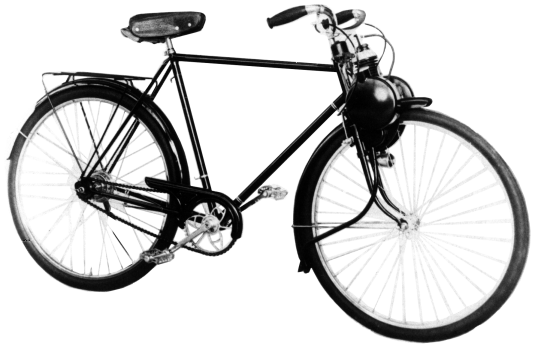Beijing, 10 August 2013
Call me old-fashioned, but I don’t really get this new fashion of tattooing – or inking, as the new lingo has it. When I was young, it was only the “Working Class” who sported tatts, and even then it was the more rootless among them who indulged: the sailors, the soldiers, the truck drivers, the criminals.

But more and more now, especially when summer rolls around and people disrobe, allowing views of parts of their anatomy which they cover the rest of the year, I am struck by how many, primarily young, people are tattooed. This happened to me again in Italy just a few weeks ago when my wife and I were on holiday there. Walking around the streets and on the beach, I was struck by the number of tattoos that flashed casually into view, worn by people who were manifestly not from one of the professional categories I’ve just listed.


Consider the stats. According to a survey quoted in an article in the Guardian, in the UK’s over-60s (the age group of which, alas!, I am nearly part) a little less than 10% have a tattoo, whereas in the 16-44 year-old group it’s nearly 30% – men and women combined. In the US, the figure climbs to 40% in this last age group. Tattooing is, as they say, going mainstream.
Of course, tattooing does have an honourable history. Our poor friend Ötzi, the Neolithic man found frozen to death in a glacier high in the Alps

carried 57 tattoos, no less. They were mostly simple lines and dots, like these ones along his spine

and he probably had them done for some therapeutic value.
That was 5,000 years ago. 2,500 years ago, a Scythian chief who was buried in the permafrost was sporting considerably more elaborate designs on his arm.

while British children who didn’t stare out of the window while the history teacher droned on and on will know that when Julius Caesar made his military foray into the British Isles in 54 BC, he found people who liked to paint, perhaps to tattoo, themselves blue: “All the Britons dye themselves with woad, which occasions a bluish color, and thereby have a more terrible appearance in the fight” JC tells us in his book Gallic Wars. So this is what my ancestors looked like …

For a history nerd like myself, it’s also fascinating to know that Ahmad ibn Fadlan, a 10th-century Arab who travelled up the River Volga and met the Vikings in their kingdom of Rus, described them as tattooed from “fingernails to neck”
The usual spoilsports, the Christians, came along and banned the practice of tattooing in Europe, seeing it as a pagan practice (to be fair, the Jews had prohibited it even earlier). So in Europe at least, tattooing died out until the late 1700’s, when James Cook – and his sailors – discovered New Zealand and the tattooed Maoris, and reintroduced the practice (more history nerdism: the English word “tattoo” was actually introduced by James Cook, who was anglicising the Polynesian word “tatau”). Here is a picture of a Maori chief from Cook’s period:

and a later one of another Maori chief, when the practice was dying out among them:

Not surprisingly, given the source of the reintroduction, sailors were at the vanguard of tattooing among the working class – by the late 1800s, 90% of the British navy was tattooed – but I have been astonished to discover that European royalty also had a penchant for getting inked. The very staid King George V

sported tattoos of the cross of Jerusalem and a dragon, while two of his sons and a bunch of wannabe European royals followed suit. Even the British aristocracy was into the game. It seems that they liked to congregate in the drawing room after dinner and, over the port and cigars, show off their tattoos to each other.
So actually it was only us prim and proper Middle Classes who didn’t have tattoos …
OK, let’s step back now from the social class stuff which so permeates discussions of tattooing, and let’s ask ourselves these questions: Are tattoos pleasant to the eye? Does tattooing enhance a person’s beauty?
Let’s immediately forget about the little dolphins below the ankle (David Cameron’s wife) or the little sharks on the foot (Martha Swire, the Cathay Pacific heiress), or the little kittens on the bum (Emma Parker Bowles, niece of the other Parker Bowles), or the little stars spangled down the back (Rihanna)

These are just cute pictures. I don’t see how having them tattooed permanently on you enhances the look of your skin or of you in general, especially if the onlooker cannot, or can hardly, see them. I mean, I can’t ask the PM’s wife to lift her leg, or Emma Parker Bowles to drop her pants, so that I can take a better gander at their dolphins and kittens, now, can I? And if I can’t do that, why bother having them? I am looking at this from the perspective of beauty … titillating your lover is another issue.
Actually, I have a problem with the idea of tattooing any kind of picture on one’s skin. Look at this photo of Angelina Jolie:

Does it enhance Ms Jolie to have those pictures on her? Do those pictures look better on her skin than on a wall? Personally I think not, in both cases. Her arms just look dirty to me and the pictures do not get better by being on the curved surface of her arm.
So let’s focus on abstract designs, which is what the Maoris had on their faces, and the Samoans had on their nether regions:

Here’s a couple of photos of abstract designs, all on men I have to say, although I can’t see why they wouldn’t work on women:





I really don’t like those heavy sleeves in the first picture (as you can see, I am picking up the language of the tattoo parlour), they just make the arms look dirty. As for the others, I guess they aren’t too bad, even allowing for the fine pecs, or whatever those muscles are called, which the models have in abundance. But do they really make the men (in this case) look more handsome? I’m not convinced; those are really strong, in-your-face colours and thick lines. Maybe thinner lines in more discrete colours, a fainter blue or red? Perhaps the Ancient Britons’ woad will make a come-back …
But at the end of the day (and this post), I really have to ask myself, if you don’t live in Samoa or some other nice South Sea island where you can go around all day more or less without any clothes on, so that your next-door neighbours can admire your designs as you walk by; if you live instead in coldish Europe where you’re covered in clothes all day, and where if you take them off in public they bundle you off to the nearest psychiatric hospital, what’s the point?
And why don’t we do it the way the Indians and others do it at weddings? Use henna, draw beautiful designs on yourself which are ephemeral

and try out other designs at the next beach party: beach party, because you can take – most of – your clothes off and parade your new fancy designs which can be in more places than just your hands.
Just a thought.
And finally, with all due respect to the Maoris, please don’t touch your face. In 330 AD, the Roman Emperor Constantine the Great banned the practice of tattooing the faces of convicts, gladiators, and soldiers because, he said, the human face reflected “the image of divine beauty, and should not be defiled.” I couldn’t agree more.
______________________________
Tatooed sailors yesteryear: http://www.akirabodyart.com/images/content/1/c20_0040-sailors-tattoo-web.jpg
Tattoo on a street: http://www.rosesfanees.it/wp-content/uploads/2013/06/IMG_3571.jpg
Tattoo on a beach: http://2.bp.blogspot.com/_0GG_6fSKfBI/TITqWrghiOI/AAAAAAAAAYQ/m2JEHxwIVzo/s400/tatuaggio_2.jpg
Ötzi iceman: http://www.age-of-the-sage.org/archaeology/otzi_iceman_2.jpg
Ötzi tattoo: http://www.freetattoodesigns.org/images/tattoo-history.jpg
Scythian tattoo: https://upload.wikimedia.org/wikipedia/en/a/a6/Scythian_tatoo.jpg
Maori Chief 1784: https://upload.wikimedia.org/wikipedia/commons/d/d4/MaoriChief1784.jpg
Maori Tutukino: https://upload.wikimedia.org/wikipedia/commons/4/45/Tukukino%2C_by_Lindauer.jpg
George V: http://upload.wikimedia.org/wikipedia/commons/e/ee/George_V_of_the_united_Kingdom.jpg
Rihanna’s back tattoo: http://cdn04.cdnwp.thefrisky.com/wp-content/uploads/2012/09/10/rihanna_tattoo10.jpg
Angelina Jolie’s tattoos: http://www.tattoodesignsidea.com/wp-content/uploads/2013/05/Anglina-Jolie-Tattoo-Designs.jpg
Traditional Samoan tattoos: https://upload.wikimedia.org/wikipedia/commons/9/99/Traditional_Samoan_Tattoo_-_back.jpg
Tattoo design-1: http://photovide.com/wp-content/uploads/2013/01/Tattoo-Designs-07.jpg
Tattoo design-2: http://cooltattooidea.com/wp-content/uploads/2013/07/pics-of-tattoo-designs-sz6ztmti.jpg
Tattoo design-3: http://www.lotonuu.com/images/samoan-tattoos/samoan-body-Tattoo10.jpg
Tattoo design-4: http://samoantshirts.com/images/tattoo/samoan%20tattoos.jpg
Tattoo design-5: http://tattoodesignsmag.com/wp-content/uploads/2013/03/Best-Tribal-Tattoo-Designs.jpg
Hennaed hands: http://www.inkuphoto.com/wp-content/uploads/2012/07/nj-wedding-photographer-nyc-wedding-photographer-boston-wedding-photographer-indian-hindu-sikh-inku.jpg





















































































